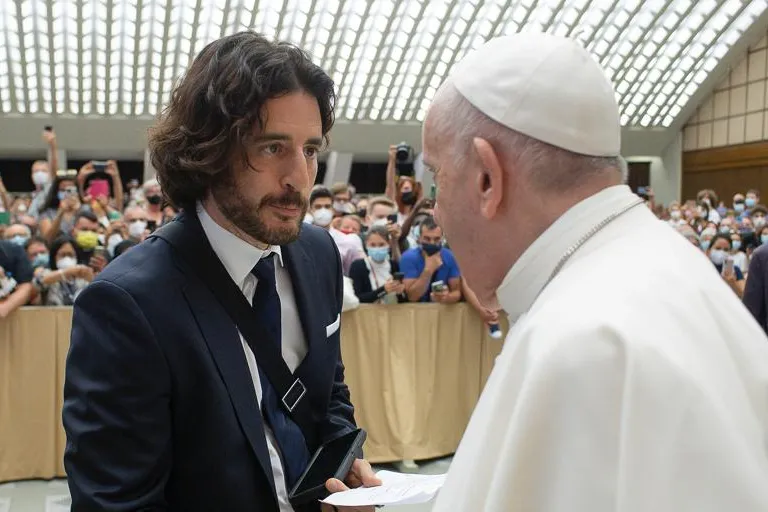
ACI Prensa Staff, Apr 9, 2024 / 15:00 pm (CNA).
Five new complaints of alleged abuse committed by Father Marko Rupnik have been presented to the Dicastery for the Doctrine of the Faith in Rome, where an investigation into the case is being carried out after Pope Francis decided to lift the statute of limitations.
The new cases mark the latest development in the case of Rupnik, a Jesuit accused of having committed serious sexual, spiritual, and psychological abuse against at least 20 women over a period of decades.
As reported by the Italian news agency Ansa, the testimonies of five alleged victims were presented at the Vatican dicastery by Italian lawyer Laura Sgrò on April 3.
The complainants include two women who shared their testimony at a press conference in February, while the other three are heretofore unknown cases.
On Feb. 21, Mirjam Kovac (who said she suffered spiritual and psychological abuse but not sexual) and Gloria Branciani recounted during a press conference in Rome what they experienced in the Loyola Community, an institution co-founded by Rupnik in Slovenia in the early 1990s.
During the unusual press conference, the former women religious shared their testimony and were accompanied by Sgró, known for also being the lawyer of Pietro Orlandi, brother of Emanuela, the young woman who disappeared from the Vatican in the 1980s, as well as by her participation in the Vatileaks case.
What is known about the investigation into the case?
No update on the investigation into Rupnik had come to light since Pope Francis lifted the statute of limitations on the case last October.
As reported by the Holy See, the pontiff asked the Dicastery for the Doctrine of the Faith to review the complaints to begin a new process.
However, the unexpected public appearance of two alleged victims marked a turn of events.
Hours after the end of the extensive and heavily attended press conference held in Rome, the Holy See’s press office issued a statement through a brief email addressed to journalists accredited to the Vatican.
The email noted that “the case is currently being examined by the Dicastery for the Doctrine of the Faith” and that “in recent months, following the order received from the pope at the end of October, the dicastery has contacted the institutions involved in various capacities in the matter to receive all the information available about the case.”
The Vatican communications department added that it is now a matter of “studying the documentation acquired to determine what procedures will be possible and useful to apply” after having expanded the scope of the search “to realities not previously contacted” and after having received their responses.
As of yet, Rupnik has not made any statement and while his case is being examined in Rome, he has continued to exercise his priestly ministry in a diocese in his native Slovenia since October 2023.
This story was first published by ACI Prensa, CNA’s Spanish-language news partner. It has been translated and adapted by CNA.
If you value the news and views Catholic World Report provides, please consider donating to support our efforts. Your contribution will help us continue to make CWR available to all readers worldwide for free, without a subscription. Thank you for your generosity!
Click here for more information on donating to CWR. Click here to sign up for our newsletter.









Leave a Reply